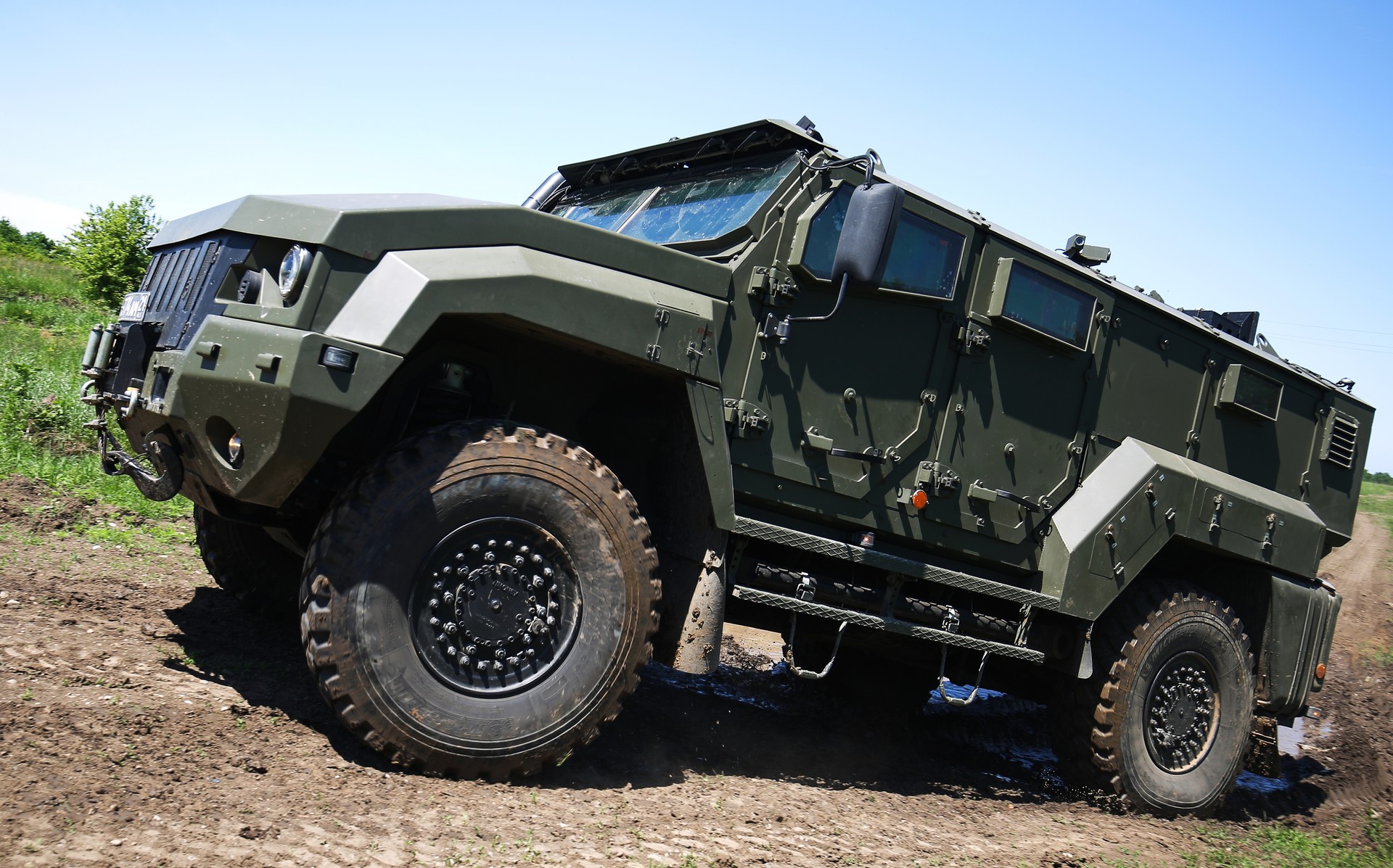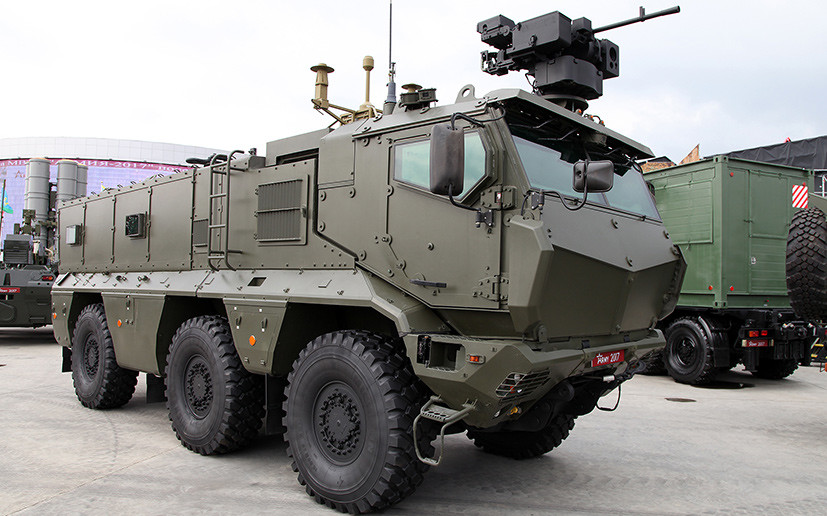Employees of the 3rd Central Research Institute of the Ministry of Defense completed a comprehensive test of 60 armored vehicles "Typhoon-K" and "Typhoon-U". Such a number of machines allows for a comprehensive assessment of their characteristics, according to the military department.
Such checks are an integral part of the modernization of the vehicle fleet of the Armed Forces of the Russian Federation. They help professionals to improve the rules for the use of armored vehicles, increase their service life and reduce repair costs.
"During the tests, specialists of the Ministry of Defense of Russia developed proposals for manufacturers to increase the reliability and security of equipment ... Such tests will help experts understand what the military vehicle of the future should be," the Russian military website says.
Traditionally, the Ministry of Defense checks all military vehicles (BAT) for compliance with two basic requirements: throughput and security. The car should feel confident on the roads, in areas of wooded, marshy and desert terrain, overcome the ford (up to 1.6 m), the ascents (about 60 degrees) and the vertical wall (0.6 m).
The military subjected the BAT samples to fire attack. From a certain distance, the machine must withstand a hit from a Dragunov sniper rifle (SVD), a large-caliber machine gun (12.7 mm), fragments from exploded artillery shells and anti-personnel mines.
In addition, the car is flooded with napalm in order to understand how its vital systems (including the fuel tank, engine, radiator) react to the influence of a flame at a temperature of 900–1100 ° C.
Wide cooperation
Creating a family of vehicles increased security "Typhoon" began after the adoption in 2010 of the "Concept of development of military automotive technology of the Armed Forces of the Russian Federation for the period up to 2020". The main document supposed to write off obsolete BAT and create unified promising models.
Commenting on the concept on the pages of the newspaper “Military-Industrial Courier”, the head of the Main Automobile and Armored Directorate of the Defense Ministry, Major General Alexander Shevchenko, said that in modern conditions “high-speed vehicles of various payloads and assignments that provide mobility for combat units and rear units” are in demand.

- Armored car K-53949 "Typhoon" during a special tactical exercise
- © Vitaly Timkiv / RIA News
In his opinion, the BAT of a new generation should have a high passability “in difficult road conditions”, smoothness, stability and controllability at high speeds, to be hardly noticeable for the technical means of reconnaissance of the enemy. Also, as Shevchenko noted, it is necessary to pay attention to the security of the crew.
As part of the development work on the Typhoon project, domestic enterprises developed a unified new-generation automotive platform, a new generation diesel engine, an automatic hydromechanical gearbox, a controlled suspension, an armored function module, a frame-panel cabin, fire resistant tires of adjustable pressure, and means anti-bullet and mine protection, as well as a combat information management system (BIUS).
Participation in the implementation of the ROC "Typhoon" took more than 120 Russian enterprises.
A rather complex cooperation chain was built, which included the Ural Automobile Plant (Miass), KamAZ (Naberezhnye Chelny), ZAO Remdizel (Naberezhnye Chelny), Steel Research Institute (Moscow), Federal State Unitary Enterprise Federal Nuclear Center (Sarov), Magistral company (Gus-Crystal) and MSTU. Bauman (Moscow).
The first to the general public (at the parade on May 9, 2014) was the Typhoon-K (KAMAZ-63968), a universal six-wheeled armored vehicle designed to carry from 10 to 16 military personnel. The weight of the car is 21 tons, the engine power of the YaMZ-5367 is 450 horsepower, the maximum speed is 105 km / h, the power reserve is 1.2 thousand km.
In 2015, the Typhoon-U frame vehicle (Ural-63095) weighing 24.5 tons appeared on Red Square. It is capable of transporting up to 16 servicemen or loads weighing up to 4 tons. The speed of the car on the highway is 100 km / h, the power reserve is 1.4 thousand km. Both "Typhoons" are equipped with video cameras, night vision devices and means of remotely controlled weapons.
Now, the Ministry of Defense is considering the possibility of installing on the "Typhoon-K" a combat module with remote control (BMDU) "Arbalet-DM" developed by the company "Armory Workshops" and the Kovrov Electromechanical Plant. The complex allows the crew of the car to fire from a 12.7-mm machine gun 6P49 "Kord" in all directions. The range of target recognition, depending on the terrain conditions, is 1.5-2.5 km.
To date, several hundred Tayfunov have been assigned to the troops. Their main operators are units of general arms intelligence, special operations forces, engineering troops and military police. In 2016, KamAZ-63968 and Ural-63095 were transferred to Syria to transport goods and military personnel. In particular, sappers and military police moved on the "Typhoons".
In addition to vehicles weighing more than 20 tons, the Typhoon family is represented by two four-wheel-drive cars, the K-4386 Typhoon Airborne Forces (Wolverine) and KamAZ-53949 Typhoonyon. The power of the 6-cylinder engine of both samples is 350 horsepower. Machines can carry up to 10 paratroopers or two tons of cargo.
Permeability, reliability, low cost
The developers paid special attention to the security of the "Typhoon" family. The body of the car consists of a metal shell, a layer of ceramic protection and the main armor plate. The windows withstand the hit of bullets of 7.62 mm, 12.7 mm caliber and (under certain conditions) 14.5 mm.
The transmission is equipped with an automatic tire inflation system, powered by the engine running. In addition, a special plastic insert is put on the rim. In case of serious damage (rubber blowdown), the Typhoon is able to “crawl” at a low speed, relying on plastic inserts. The machine can continue to move even after several hits on the wheels.

- K-63968 "Typhoon-K" with a combat module "Crossbow"
- © Vitaly V. Kuzmin
All members of the family must be able to withstand a bomb of up to 8 kg in trotyl equivalent. To reduce the probability of death of the crew from the explosion of mines, the designers used a V-shaped hull bottom. Changes affected the layout of the cabin. The paratroopers are facing each other, and their seats are equipped with means that absorb the energy of an explosion. The most vulnerable transmission units are covered with armor plates.
In a conversation with RT, Sergey Suvorov, a candidate of military sciences, said that Russian designers had created reliable and efficient BAT samples capable of solving assigned tasks under cover and in the rear. However, progress does not stand still. The Ministry of Defense is looking for ways to further improve the "Typhoon" and is working on the concept of a new generation armored car, the expert said.
“In my opinion, the Typhoon optimally combines the main combat properties - throughput, reliability, and relative cheapness of production. In the future, these machines may receive more serious protection and automated control systems. It is very important that the military clearly articulate their demands. With harmonious cooperation between the Ministry of Defense and industrialists, magnificent samples will appear that will be in demand both in our army and abroad, ”Suvorov stressed.
